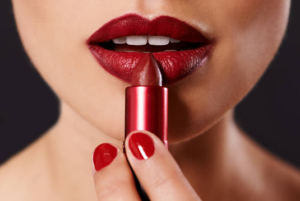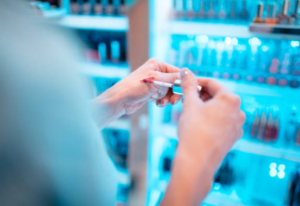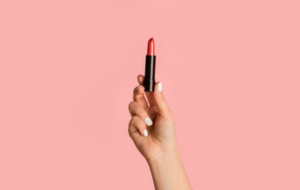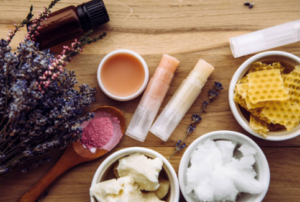Lead in Lipstick

The allure of beauty products is undeniable. From the perfect shade of lipstick to the shimmering eyeshadow palettes, cosmetics have been a part of human history for centuries. However, beneath the surface of our favorite beauty products lies a controversial issue that has gained increasing attention in recent years – heavy metals, particularly lead, found in cosmetics.
In this blog, we’ll delve deep into the world of heavy metals in beauty products, with a particular focus on the lead content in lipstick. We’ll explore the health risks, regulations, and steps you can take to make informed choices about your cosmetics.
Understanding Heavy Metals in Cosmetics
Heavy metals are chemical elements with a relatively high atomic mass that can be toxic to humans in excessive amounts. Some of the heavy metals commonly found in cosmetics include lead, cadmium, arsenic, mercury, and chromium. These metals can make their way into cosmetics through various means:
- Natural Contaminants: Some heavy metals are naturally present in the raw materials used in cosmetics. For example, trace amounts of heavy metals can be found in mineral pigments, micas, and other colorants derived from minerals.
- Manufacturing and Processing: During the manufacturing and processing of cosmetics, cross-contamination can occur when equipment used to process different ingredients is not properly cleaned, leading to unintended heavy metal presence in products.
- Colorants and Pigments: Certain colorants used in cosmetics may contain heavy metals. For example, some red and yellow pigments can contain lead and cadmium. These pigments may be added to lipsticks, eyeshadows, and nail polishes to achieve specific shades.
- Contaminated Ingredients: In rare cases, raw materials sourced from suppliers may be contaminated with heavy metals due to factors like environmental pollution or improper processing.
- Intentional Use: Some cosmetic products, particularly those with high staying power, like long-wearing lipsticks, may intentionally contain heavy metals to enhance color vibrancy and longevity. However, this practice is less common today due to regulatory restrictions and health concerns.

The Lipstick Controversy
Lipstick, often regarded as an emblem of beauty and femininity, has become a focal point in the ongoing controversy over heavy metals in cosmetics, particularly lead. Here’s a closer examination of why this issue is so significant:
- Widespread Use: Lipstick is one of the most widely used cosmetics worldwide. Its popularity knows no bounds, with countless shades and formulations available to suit every taste and style. As a result, its potential for exposure to lead affects a broad demographic of consumers.
- Ingestion Concerns: Unlike many other cosmetics that are applied to the skin, lipstick is applied directly to the lips, a mucous membrane. This means that any heavy metals present in lipstick can be ingested unintentionally, as people often lick their lips or consume food and drinks while wearing it. This ingestion route can significantly increase the risk of lead exposure.
- Lack of Awareness: Many consumers are unaware of the presence of heavy metals in cosmetics, especially lead in lipstick. Since lipstick is not typically ingested in large quantities, some may assume that the risk is negligible. However, even trace amounts of lead can pose health risks, particularly with long-term and consistent use.
- Variability in Brands: Heavy metal content can vary widely among different lipstick brands and shades. Independent studies have revealed significant differences in lead levels between products, indicating that some manufacturers prioritize safety more than others. This variability further underscores the importance of informed consumer choices.
- Legal and Regulatory Challenges: The regulation of lead in cosmetics, including lipstick, can be a complex and contentious issue. Regulatory agencies like the FDA (U.S. Food and Drug Administration) have established guidelines and limits for lead in cosmetics, but these guidelines are not without their criticisms. Critics argue that these limits may not be stringent enough to ensure consumer safety.
- Testing Inconsistencies: Testing for heavy metals in cosmetics can be inconsistent. Manufacturers are responsible for ensuring that their products comply with regulations, but some independent studies have found higher levels of lead than what is reported by manufacturers. This discrepancy raises questions about the reliability of testing methods and the need for more transparent reporting.
- Clean Beauty Movement: In response to concerns about heavy metals and other potentially harmful ingredients in cosmetics, the clean beauty movement has gained momentum. Clean beauty brands prioritize safety and transparency, emphasizing the use of non-toxic ingredients and rigorous testing to ensure product safety.

The Clean Beauty Movement
The Clean Beauty Movement is a growing and influential trend within the beauty and cosmetics industry that places a strong emphasis on safety, transparency, and the use of non-toxic ingredients. It has gained momentum in recent years as consumers become more aware of the potential health risks associated with certain ingredients in cosmetics, including heavy metals like lead. Here’s a closer look at the key aspects of this movement:
- Ingredient Transparency: Clean beauty brands prioritize transparency by disclosing all the ingredients used in their products. This transparency allows consumers to make informed choices about the products they use on their skin and bodies.
- Non-Toxic Formulations: One of the central tenets of clean beauty is the avoidance of toxic ingredients. Clean beauty products are formulated without commonly criticized substances such as parabens, sulfates, phthalates, formaldehyde-releasing agents, and synthetic fragrances. By eliminating these potential irritants and harmful chemicals, clean beauty aims to reduce the risk of adverse reactions.
- Safety and Efficacy: Clean beauty products are designed to be both safe and effective. Brands often invest in research and development to create products that deliver results without compromising on safety or long-term health.
- Sustainability and Ethical Practices: Many clean beauty brands prioritize sustainability and ethical practices. This includes sourcing ingredients responsibly, using eco-friendly packaging, and adopting cruelty-free and vegan practices. These brands are often aligned with values that promote environmental responsibility and ethical business practices.
- Third-Party Testing: To reinforce their commitment to safety, clean beauty brands often subject their products to third-party testing. This external validation helps build trust with consumers by ensuring that the products meet rigorous safety and quality standards.
- Advocating for Stricter Regulation: The clean beauty movement has been a vocal advocate for stricter regulation of cosmetics. Advocates argue that current regulations may not adequately protect consumers from harmful ingredients, including heavy metals like lead. They call for increased transparency, comprehensive testing, and stricter limits on potentially hazardous substances.
- Consumer Empowerment: Perhaps one of the most significant impacts of the clean beauty movement is its empowerment of consumers. It encourages individuals to take control of their beauty routines and make informed choices. This shift in consumer behavior has forced larger cosmetics companies to pay attention and make changes in response to consumer demands for safer, more transparent products.
- Market Growth: The clean beauty market has witnessed remarkable growth in recent years. As consumer demand for safer, more ethical, and transparent products has increased, an array of clean beauty brands and retailers has emerged to meet this demand. This growth has contributed to mainstream awareness of clean beauty principles.

How to Protect Yourself
- Read Labels and Ingredient Lists: When shopping for cosmetics, always read the product labels and ingredient lists carefully. Look for products that explicitly state that they are free from heavy metals, lead, or other harmful substances. Familiarize yourself with common heavy metal-related terms such as lead, cadmium, and mercury to identify them in ingredients.
- Research Brands and Products: Conduct research on brands and products before making a purchase. Seek out brands known for their commitment to safety, transparency, and clean beauty principles. Check for certifications like “Clean Beauty,” “Cruelty-Free,” and “Vegan” to help guide your choices.
- Consult Independent Testing Reports: Some organizations and websites conduct independent testing of cosmetics for heavy metals and other contaminants. These reports can provide valuable information about the safety of specific products. Look for such reports and reviews from trusted sources.
- Prioritize Clean Beauty Brands: Consider choosing cosmetics from clean beauty brands that have stringent ingredient standards, avoid toxic chemicals, and emphasize safety and transparency. These brands often have a commitment to using non-toxic pigments and avoiding heavy metals.
- Reduce Usage: If you’re concerned about heavy metals in lip products or other cosmetics, consider reducing the frequency of use or opting for alternatives. For instance, you can use lip balms or lip glosses with transparent ingredient lists and minimal heavy metal concerns.
- Choose Matte over Metallic: Matte lipsticks tend to contain fewer metallic pigments, which are more likely to contain heavy metals for their shimmering effects. Opt for matte formulas when possible if you’re concerned about heavy metal exposure.
- Homemade and Natural Alternatives: For those who prefer complete control over their cosmetics, consider exploring homemade or natural alternatives. Many DIY beauty recipes allow you to create your cosmetics using simple, natural ingredients, reducing the risk of heavy metal exposure.
- Stay Informed: Keep yourself informed about the latest research and news related to heavy metals in cosmetics. Stay updated on regulatory changes and consumer advocacy efforts. Knowledge is your best defense against unsafe products.
- Advocate for Stricter Regulations: Join advocacy groups or support organizations working to push for stricter regulations on heavy metals in cosmetics. Your voice can contribute to changes that protect consumer safety.
- Contact Manufacturers: If you have concerns about a specific product, don’t hesitate to contact the manufacturer or brand directly. Inquire about their testing procedures for heavy metals and their commitment to consumer safety. Reputable companies should be willing to provide information.
- Report Adverse Reactions: If you experience adverse reactions or suspect heavy metal contamination in a product, report it to the appropriate regulatory agency, such as the FDA in the United States. Your report can help trigger investigations and recalls if necessary.
- Encourage Responsible Consumption: Educate friends and family about the potential risks associated with heavy metals in cosmetics. Encourage responsible consumption and help others make informed choices.
The controversy surrounding heavy metals in cosmetics, particularly lead in lipstick, serves as a reminder that beauty can sometimes come at a cost. While cosmetics can enhance our appearance and boost our confidence, it’s crucial to be aware of the potential risks associated with certain products.
By educating ourselves, supporting clean beauty brands, and advocating for stricter regulations, we can work towards a future where cosmetics are not only effective and beautiful but also safe for our health and well-being. Ultimately, it’s our choices as consumers that can drive positive change in the beauty industry and help us all lead healthier, more beautiful lives.

